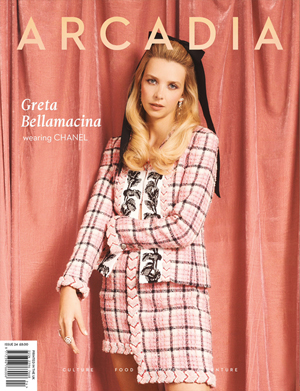Noise pollution can significantly impact daily life, making soundproof curtains an increasingly popular solution for creating peaceful spaces at home and work. These specialized window treatments combine aesthetic appeal with practical sound-dampening properties through their unique construction and materials.
For those looking to reduce noise and create a quieter environment, selecting the right curtains is vital. The purpose of soundproof curtains is not only to block external noise but also to absorb sound within the room, providing a more peaceful atmosphere. The most effective soundproof curtains feature multiple layers of dense fabric, typically measuring between 0.5 to 1 inch in thickness, and should extend beyond the window frame by at least 4 inches on each side for optimal noise reduction.
If you want these kinds of curtains, you can visit this page to find soundproof curtains online and discover a range of options that will reduce unwanted noise while enhancing room décor. These options not only help create a more peaceful environment, but can also provide additional benefits like temperature regulation and light blocking capabilities.
Key Takeaways
- Dense, multi-layered curtains with proper sizing provide the most effective sound dampening results
- Quality soundproof curtains serve multiple functions beyond noise reduction
- Proper installation and measurement are crucial for maximum sound-blocking effectiveness
Essential Features of Effective Soundproof Curtains
The key to successful noise reduction lies in specific material properties, precise construction techniques, and proper installation methods that work together to block and absorb sound waves.
- Material and Construction
Sound-blocking curtains require dense, heavy fabrics weighing between 6-8 pounds per panel. Triple-weave polyester and velvet are among the most effective materials due to their tight weave patterns.
The ideal thickness ranges from 0.5 to 1 inch, with multiple layers providing better noise reduction. High-quality curtains often feature a middle layer of sound-absorbing material sandwiched between decorative outer layers.
Professional-grade soundproof curtains incorporate thermal insulation properties, which can help with both temperature control and noise reduction.
- Sound Blocking Capabilities
The most effective curtains achieve a Sound Transmission Class (STC) rating between 20-30, reducing noise levels by 7-15 decibels.
Dense, multi-layered curtains absorb mid to high-frequency sounds most effectively. These frequencies typically include:
- Traffic noise
- Voice conversations
- Television sounds
- Street noise
The curtain’s ability to block sound depends on its coverage area. Panels should extend 3-4 inches beyond the window frame on each side.
- Installation and Maintenance
Mount curtain rods 4-6 inches above the window frame to minimize sound leakage. Use wrap-around rods or ceiling-mounted rails for maximum coverage.
Heavy-duty mounting brackets are essential to support the extra weight of soundproof curtains. Double-rod systems allow for layering multiple curtains for enhanced sound blocking.
Regular maintenance includes:
- Gentle vacuuming every 2-3 weeks
- Professional cleaning every 6-12 months
- Careful steaming to remove wrinkles
These curtains typically require dry cleaning to maintain their sound-blocking properties and prevent damage to the internal layers.
Additional Benefits and Considerations
Soundproof curtains offer multiple advantages beyond noise reduction, including aesthetic customization, climate control features, and varying performance levels across different brands.
- Aesthetic and Functional Design
Sound-dampening curtains come in diverse styles and colours to match any room’s décor. Many manufacturers offer velvet curtains in rich, luxurious textures that enhance both acoustics and visual appeal.
The hanging mechanism matters significantly. Rod pocket designs create elegant pleats, while back tab styles offer a more contemporary look with clean lines.
Most acoustic curtains feature layered construction. The outer layer typically showcases decorative patterns or solid colours, while inner layers focus on sound absorption.
- Temperature and Light Control
These curtains excel at thermal insulation, helping maintain consistent room temperatures year-round. The thick materials can reduce heating costs in winter and cooling expenses in summer.
Many acoustic curtains double as blackout curtains, blocking 85-99% of outside light. This feature proves especially valuable for home theatres and bedrooms.
The thermal properties create an additional sound barrier, as the insulating layers help trap both heat and sound waves.
Comparing Soundproof Curtain Brands
RYB Home leads in multi-layer design with their triple-weave technology. Their curtains consistently reduce noise by 25-40%.
Nicetown offers excellent value with their double-layer curtains, featuring robust grommets and machine-washable fabric.
H.Versailtex provides premium linen-textured options that balance aesthetics with functionality. Their curtains excel in both sound reduction and temperature control.
Deconovo’s back tab curtains stand out for durability and easy maintenance. They offer one of the widest colour selections on the market.
Each brand uses different fabric densities and layer combinations, affecting both sound-blocking capability and price point.
Conclusion
Soundproof curtains serve as an effective solution for reducing unwanted noise in homes and offices. The most crucial factors when purchasing these curtains include material density, fabric type, size measurements, rod strength, and proper installation methods.
Choosing high-quality materials like polyester or velvet, ensuring floor-to-ceiling coverage, and investing in sturdy mounting hardware will maximize sound-dampening benefits. These key considerations help create a quieter, more peaceful living or working environment.







